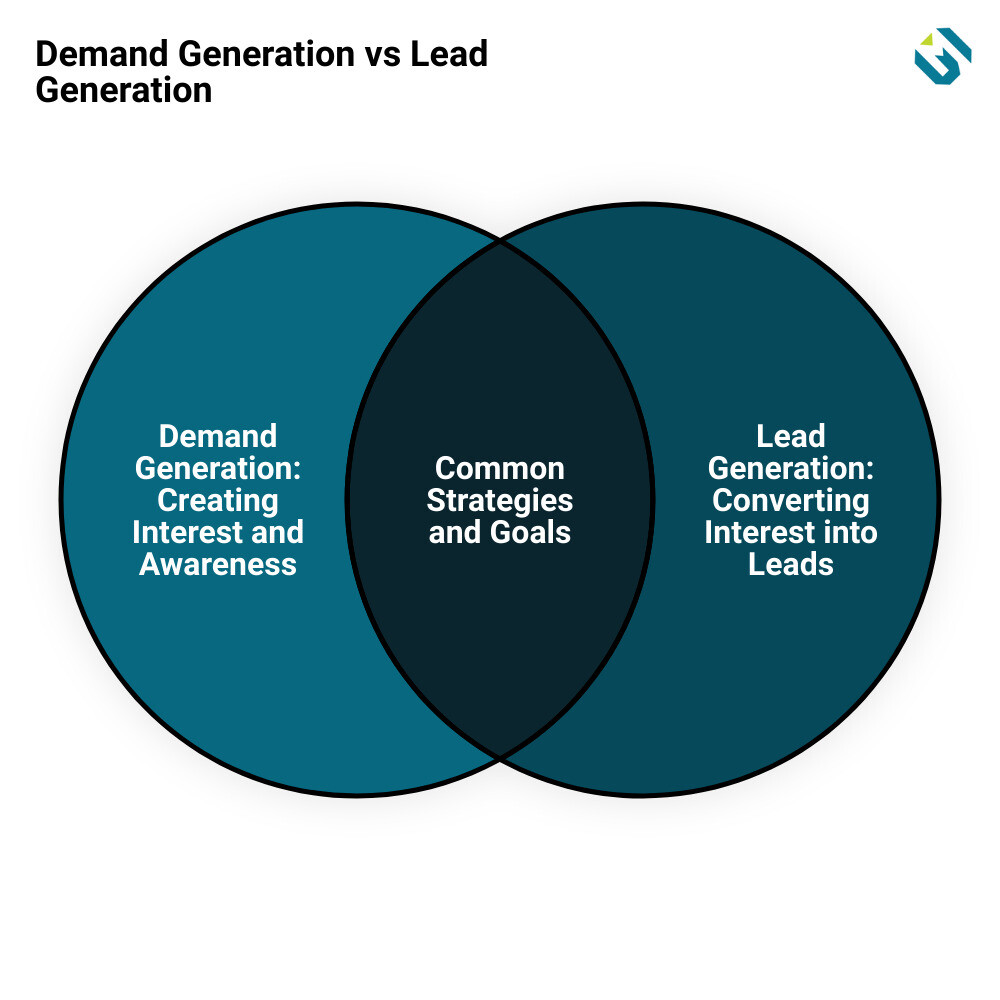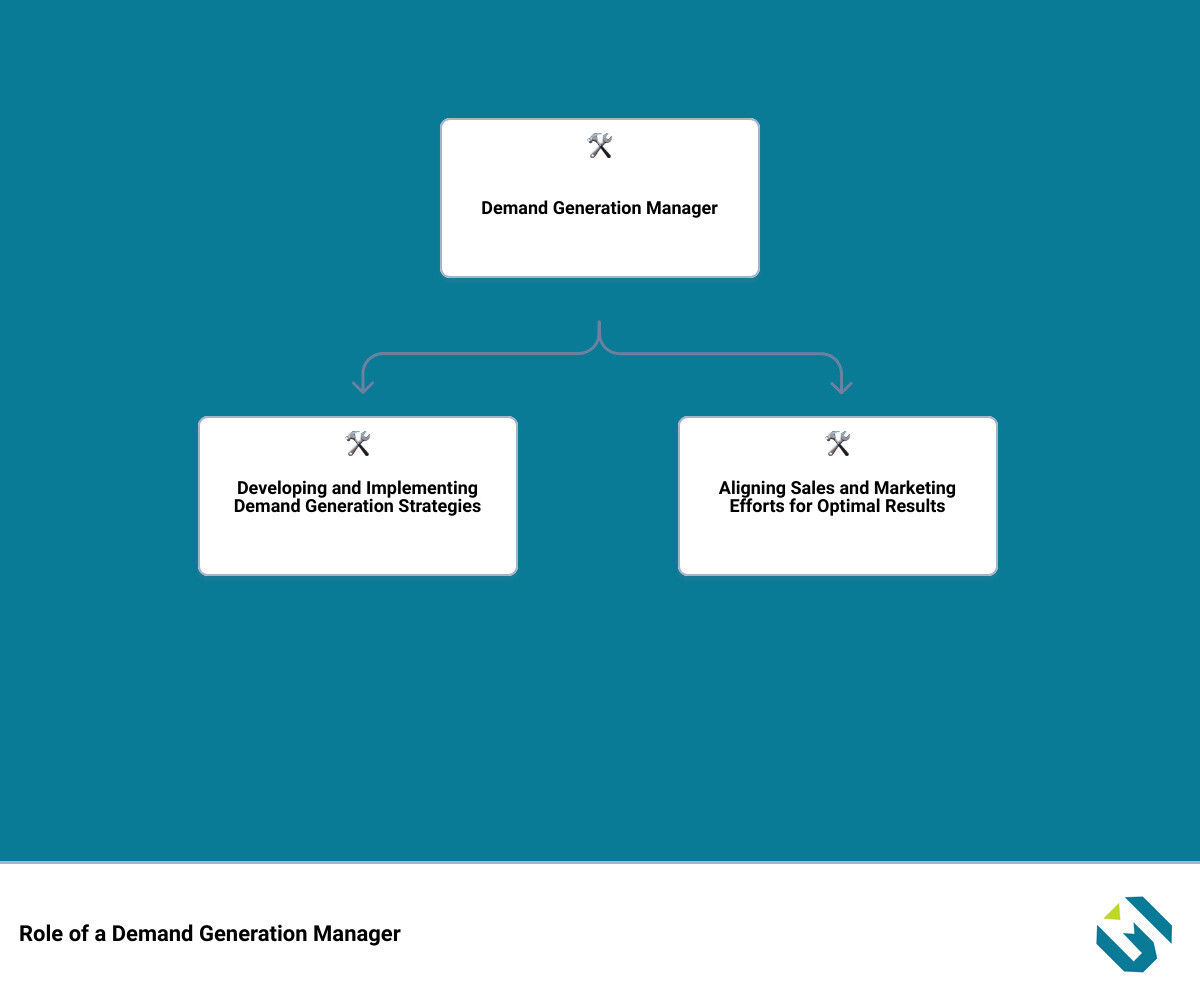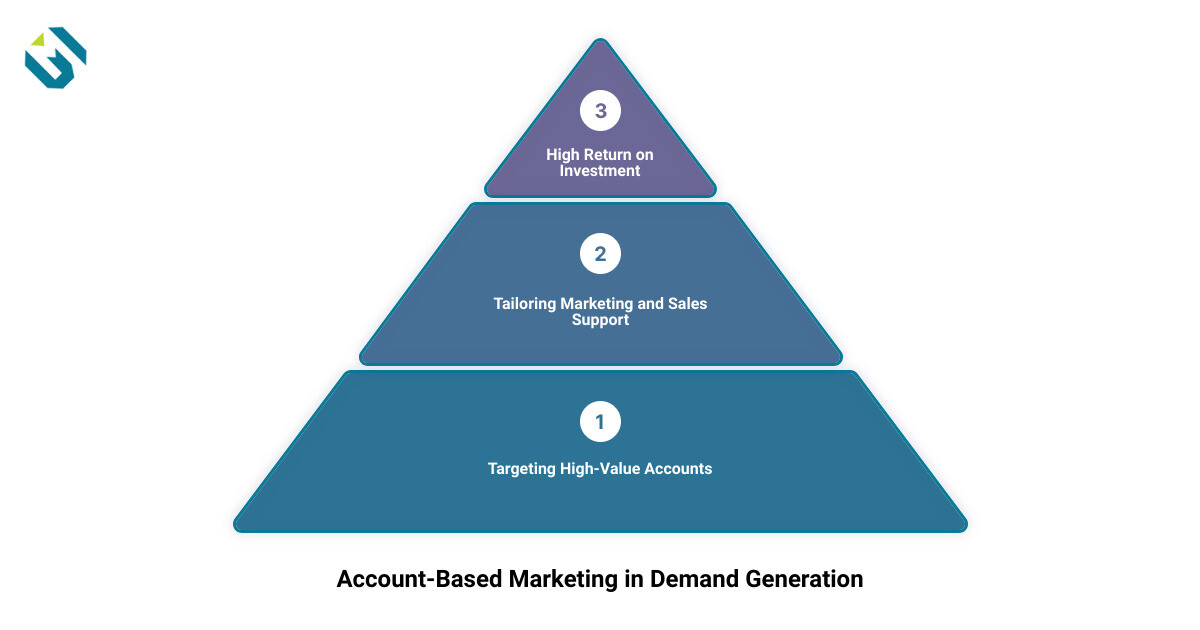Riding the wave of digital transformation and the influx of HR and workforce tech companies, how do you ensure your brand stands out in the vast sea of competition? The answer lies in mastering the art and science of demand generation.
Demand generation is a powerful marketing strategy that aims to create awareness and interest in your product or service. It goes beyond merely identifying existing prospects. Instead, it focuses on stimulating interest in those who may not even know about your brand yet. By focusing on the challenges that potential customers face and providing them with solutions, demand generation can be a game-changer for your business.
This comprehensive guide aims to break down the fundamentals of demand generation and provide practical strategies to help HR tech and workforce tech companies like yours thrive in today’s highly competitive marketplace.
In the sections that follow, we will delve into the differences between demand generation and lead generation, the role of a demand generation manager in your business, and how to get started with demand generation. We will also explore specific demand generation strategies designed for HR tech and workforce tech companies and the power of Account-Based Marketing (ABM) in demand generation.
By the end of this guide, you will have the knowledge and tools to unlock the power of demand generation and set your business on the path to success. So, let’s dive in and explore the fascinating world of demand generation.
The Difference Between Demand Generation and Lead Generation
In the bustling world of digital marketing, there’s a lot of talk about generating leads and creating demand. But do you know the real difference between these two critical strategies? Let’s demystify the jargon and break down what each term means and how it can impact your business growth.
Demand Generation: Creating Interest and Awareness
Imagine the market as a vast, noisy concert. In this setting, demand generation is your band’s hit song that gets the crowd interested and excited. It’s all about grabbing the audience’s attention, making them sway to your rhythm, and ensuring they remember your tune even after the concert.
In a more technical sense, demand generation is the process of creating awareness and interest in your brand and its offerings. It’s about attracting an audience and encouraging them to consume your content. The primary goal here is to create brand awareness, establish trust with potential buyers, and educate the market.
Typically, demand generation involves distributing free, ungated content that’s widely available, like a blog post on your company website. This strategy drives long-term growth by creating a shorter sales cycle, higher win rates, and lower customer acquisition costs (CAC) over the long term. It’s about playing the long game and cultivating relationships with potential customers over time, so when they’re ready to buy, they think of you first.
Lead Generation: Converting Interest into Leads
Now, let’s get back to the concert analogy. If demand generation is your hit song, then lead generation is your merchandise booth where fans rush to buy your band’s t-shirts, posters, and albums. It’s where the interest you created gets converted into tangible leads.
In marketing jargon, lead generation is focused on capturing lead information and passing it to sales. It’s about getting contacts for your sales team, capturing contact details, warming up leads, and preparing them for the sales pitch.
Most commonly, lead generation is achieved through gated content, like a white paper that requires interested parties to submit a form to gain access. This strategy aims to drive short-term growth by providing contacts for sales to pursue, helping to achieve shorter-term growth objectives.
In a nutshell, while demand generation and lead generation might seem similar, they serve distinct yet complementary roles. Demand generation is about sparking interest and building relationships, while lead generation is about capitalizing on that interest to capture leads. Both are essential for a robust marketing strategy that effectively drives business growth.
The Role of a Demand Generation Manager in Your Business
Navigating the choppy waters of the market can be a daunting task. This is where a Demand Generation Manager steps in, acting as the captain of your ship, steering your business toward growth and success. Let’s delve into the pivotal roles they play in shaping your business’s trajectory.
Developing and Implementing Demand Generation Strategies
The primary role of a Demand Generation Manager is to formulate and execute effective demand generation strategies. This involves identifying the most effective channels and tactics to generate awareness about your company’s products or services and stir interest among potential customers. They harness a wide array of strategies that can range from content marketing, SEO, social media campaigns, webinars, and more.
The manager also works towards penetrating new audience sectors, thus expanding your market reach. In essence, they’re responsible for turning the spotlight on your business, making sure your brand stands out amidst the cluttered HR tech or workforce tech market.
Aligning Sales and Marketing Efforts for Optimal Results
In addition to developing strategies, a Demand Generation Manager plays a crucial role in bridging the gap between sales and marketing teams. They ensure that these two critical departments are working in tandem towards a common goal – driving business growth.
They align the efforts of both teams, helping them to understand and appreciate each other’s roles and responsibilities. This alignment ensures a seamless transition from the marketing phase of attracting and nurturing leads to the sales phase of converting these leads into customers.
Using Data and Analytics to Measure and Improve Performance
A Demand Generation Manager doesn’t operate on guesswork. They use data and analytics to measure the success of their strategies, making data-driven decisions to enhance performance and optimize results. They monitor key metrics such as lead quality, conversion rates, and the impact of their initiatives on overall revenue to gauge the effectiveness of their demand generation efforts.
By continually tracking these metrics, the manager can identify what’s working and what’s not. They can then tweak their strategies accordingly, ensuring your business is always moving in the right direction.
In conclusion, the role of a Demand Generation Manager is integral to the success of your business. Their strategic planning, team alignment efforts, and data-driven approach can significantly boost your business’s growth, ensuring you stay ahead in the competitive HR tech or workforce tech market.
How to Get Started with Demand Generation
Unleashing the power of demand generation starts with a strategic approach. Like any marketing strategy, it begins with setting clear goals, understanding your audience, crafting the right message, distributing it via the right channels, and measuring the outcomes. Here’s how to get started.
Setting Goals for Opportunities
Before diving into the demand generation pool, it’s essential to define what success looks like for your HR tech or workforce tech company. Set tangible, measurable goals that align with your overall business objectives. Whether you’re looking to increase website traffic, generate new leads, or boost brand awareness, having specific goals gives your demand generation strategies a clear direction and purpose.
Developing Buyer Personas for Targeting
Your demand generation efforts should be squarely focused on your ideal customer. Thus, developing well-defined buyer personas is critical. A buyer persona is a detailed description of your target customer, including their needs, pain points, and decision-making process. These personas will guide your content creation, distribution strategies, and messaging, ensuring you’re reaching the right people with the right message.
Creating Content Tailored to Each Stage of the Persona’s Journey
Content plays a pivotal role in demand generation. It’s how you establish authority, build trust, and guide potential customers through their buying journey. But not all content is created equal. Your content should be tailored to each stage of the buyer’s journey, addressing their specific needs and concerns at each point. This could mean creating blog posts that answer common questions for those at the awareness stage, or offering in-depth guides and webinars for those closer to making a purchase decision.
Distributing Content via the Right Channels
Having great content is only half the battle. You also need to distribute it effectively. Your distribution channels should be chosen based on where your target audience spends their time. This could include social media platforms, email newsletters, blogs, or industry forums. By meeting your audience where they are, you increase the chances of your message being heard and acted upon.
Measuring Your Success in Demand Generation
Finally, it’s crucial to measure the success of your demand generation efforts. This involves tracking key performance indicators (KPIs) such as lead quality, conversion rates, and overall revenue impact. Regularly reviewing and optimizing your strategy based on these metrics ensures that you’re always delivering the right content to the right people at the right time, ultimately driving business growth.
Starting with demand generation might seem daunting, but by taking these steps, you can unlock its potential and boost your business success. Remember, demand generation isn’t a one-time task but an ongoing process that requires continuous refinement and optimization. So, get started today, and watch your HR tech or workforce tech business grow!
Demand Generation Strategies for HR Tech and Workforce Tech Companies
As an HR tech or workforce tech company, it’s crucial to stand out in a cluttered market. To achieve this, you need to implement a well-rounded demand generation strategy that not only attracts potential customers but guides them through the buying journey effectively. Here are three key components to focus on:
Building Brand Awareness and Credibility
In the sea of HR tech solutions, your brand should be a beacon that guides prospects to your company. Achieving this involves creating a consistent brand identity across all customer touch points. Your brand values shouldn’t just be communicated—they should be experienced by your prospects.
To build brand awareness, focus on creating engaging content like blog posts, informative white papers, or interactive webinars designed to increase visibility. SEO and Pay-Per-Click strategies can drive organic traffic to your site, boosting your brand’s online presence. Remember, your brand should be immediately recognizable and distinct to stand out.
But building awareness isn’t enough—you also need to establish credibility. Trust is the bedrock of any successful business relationship. Demonstrate your expertise, offer valuable insights, and assist your prospects in achieving their goals. Hosting webinars on key HR topics, contributing to industry discussions, and partnering with influencers can showcase your thought leadership. By providing prospects with valuable, actionable information, you position your brand as a trusted resource.
Creating Market Demand and Uncovering Interested Prospects
The next step is to create market demand by nurturing your audience until they’re ready to engage. This involves a deep understanding of your audience’s needs and delivering personalized content that addresses those needs.
Personalized email campaigns, based on customer behavior or specific actions taken, can significantly increase transaction rates. By understanding your customer’s goals, you can create more targeted campaigns that encourage prospects to take the next step. This nurturing process is key to uncovering interested prospects and guiding them further along in their buying journey.
Bridging the Gap Between Marketing and Sales
Demand generation is a team sport. Your marketing and sales teams must work together seamlessly for your strategy to be successful.
A collaborative approach allows you to guide potential customers through the sales funnel more effectively. Sales can provide valuable insights into what content resonates with prospects, while marketing can leverage lead scoring data to optimize digital marketing channels.
In essence, a successful demand generation strategy for HR tech and workforce tech companies involves building brand awareness, establishing credibility, creating market demand, and fostering collaboration between marketing and sales. By focusing on these key areas, you can unlock the secret to skyrocketing your demand generation activities and ultimately, boost your business success.
The Power of Account-Based Marketing (ABM) in Demand Generation
Unleashing the power of account-based marketing (ABM) can turbocharge your demand generation and catapult your HR technology or workforce technology company to new heights. By focusing on high-value accounts and providing tailored marketing and sales support, ABM can significantly enhance your demand generation strategy.
Targeting High-Value Accounts
Consider ABM as the sniper rifle of your marketing arsenal. While traditional demand generation strategies might scatter their shots hoping to hit a target, ABM takes a laser-focused approach. It zeroes in on high-value leads – those accounts that represent significant growth opportunities for your business.
What does this mean for your HR tech or workforce tech firm? It means creating target personas that embody the business objectives and values of these high-potential leads. This approach goes beyond merely understanding their unique needs and common pain points. It’s about knowing the steps they take in their buying journey and anticipating the questions they might ask before making a purchase.
Here’s the clincher: this laser-targeted approach delivers better results further down the sales funnel. According to an ITSMA survey, companies using ABM saw a massive 84% rise in reputation score and a 74% improvement in customer relationships.
Tailoring Marketing and Sales Support to High-Value Accounts
Once you have identified your high-value leads, the next step is to deliver highly personalized marketing and sales support. This step involves using your content and account-based marketing data to build a precise email list and segment it into targeted groups.
With the help of email automation software, you can initiate a series of emails that keep your prospects engaged and thinking about your brand. From blog posts and white papers to webinars and direct emails, the content you provide should directly address their unique pain points and questions.
Remember, ABM is not a standalone strategy, but a powerful complement to your existing demand generation efforts. By targeting the right leads with the right content at the right time, ABM can significantly boost your conversion rates, improve your ROI, and ultimately contribute to your company’s bottom line.
In the cluttered market of HR tech and workforce tech, ABM can be the silver bullet that sets your company apart. But it’s not just about adopting ABM; it’s about leveraging it effectively. That’s where a specialized marketing agency like GrowthMode Marketing can make all the difference. By helping you identify high-value leads, create targeted personas, and develop personalized content strategies, we can unlock the power of ABM in your demand generation efforts.
In the next section, we delve deeper into how GrowthMode Marketing uses demand generation tactics to drive growth for our clients.
Conclusion: The Impact of Demand Generation on Business Success
In the bustling digital marketplace, businesses are constantly vying for the attention of potential customers. Standing out amongst the noise can be a daunting task, but with the right tactics, your brand can become a beacon for your ideal customers. That’s where demand generation comes in, enabling businesses to rise above the competition, attract high-quality leads, and ultimately drive business success.
Effective demand generation strategies have the power to shape your business’s future. By raising brand awareness and creating a demand for your product or service, you lay the foundation for business growth. It’s about more than just getting your name out there; it’s about building trust, credibility, and a lasting relationship with your potential customers.
For HR tech and workforce tech companies, demand generation is a game-changer. It allows you to cut through the cluttered market and get in front of your ideal customer profile audience. By tailoring your content to each stage of the buyer’s journey, you engage your audience, answer their questions, and position your brand as a trusted authority. This not only generates interest among potential buyers but also helps to nurture them into becoming loyal customers.
Moreover, demand generation bridges the gap between marketing and sales, fostering alignment for optimal results. With a well-defined strategy, sales and marketing teams can work together seamlessly, ensuring that no potential lead slips through the cracks. By providing sales with the right content, tools, and information, you empower them to close deals more efficiently and effectively, contributing to overall business growth.
In the end, the secret to a successful demand generation strategy lies in striking a balance between generating awareness, capturing demand, and accelerating the pipeline. As you progress through these stages, you should see a significant boost in your business growth. The ultimate goal is to create a predictable pipeline that will fuel the growth of your business, and demand generation is the vehicle that will get you there.
Remember, demand generation is not a one-size-fits-all strategy. It requires a deep understanding of your target audience, a clear definition of your business goals, and a commitment to continuous improvement based on data-driven insights.
At GrowthMode Marketing, we can help you unlock the untapped potential of demand generation strategies to boost your business success today. From developing buyer personas to implementing targeted content strategies and measuring your success, we’ve got you covered.
In conclusion, the impact of demand generation on business success is profound. It is the cornerstone of growth for HR tech and workforce tech companies looking to build brand awareness, credibility, trust, and drive high growth. Demand generation is a long-term investment, but the returns are worth it – a thriving business with a loyal customer base and a robust bottom line.





